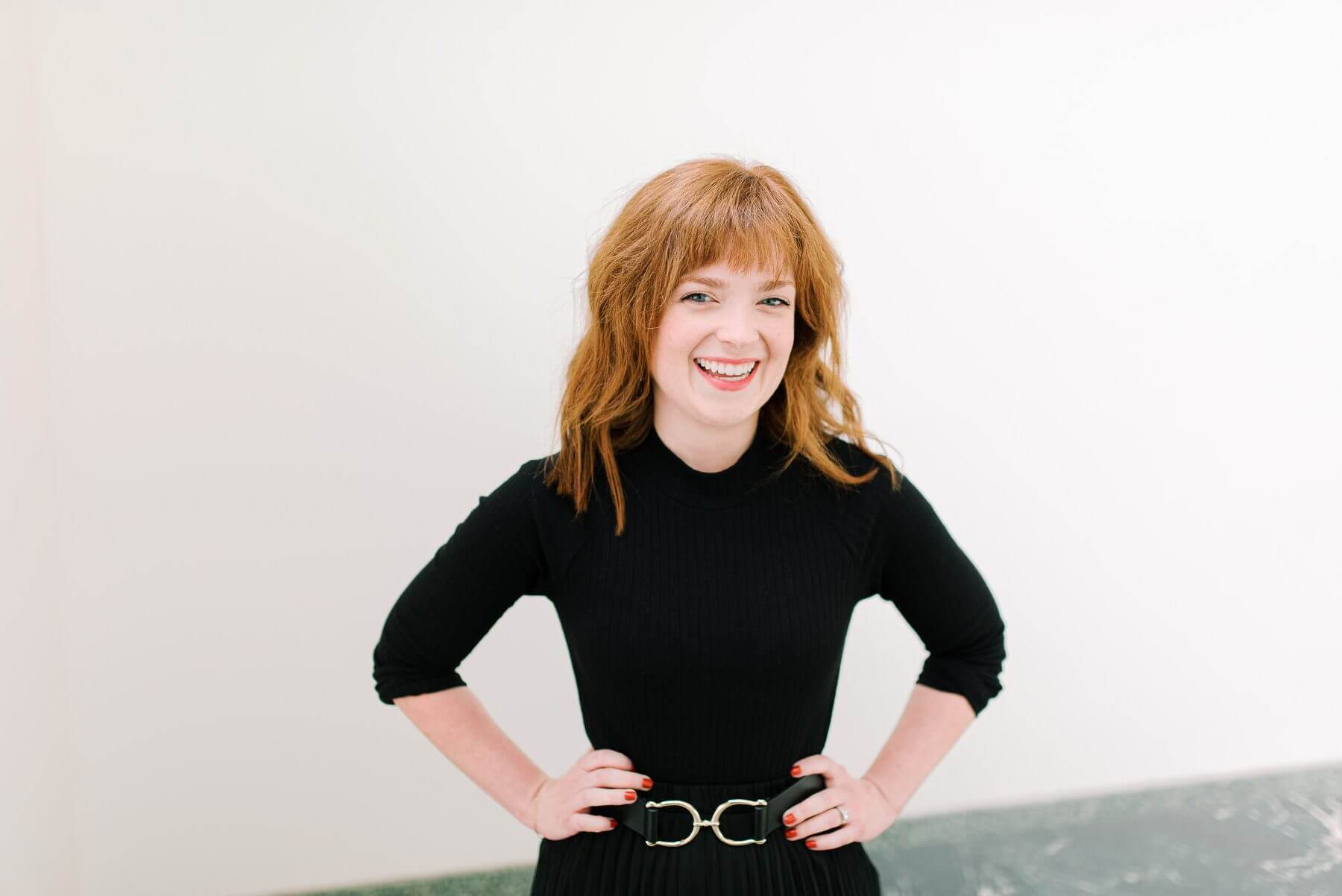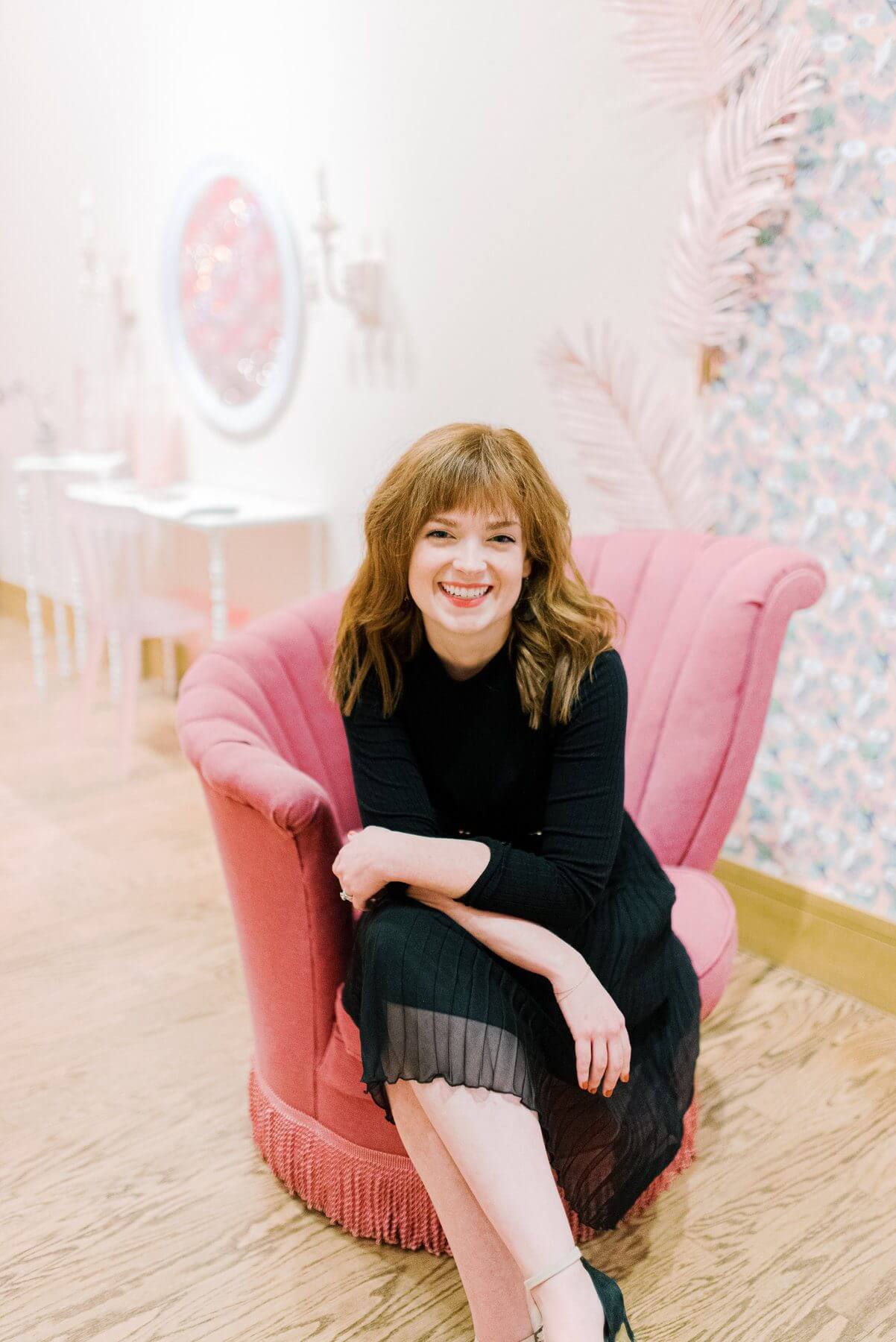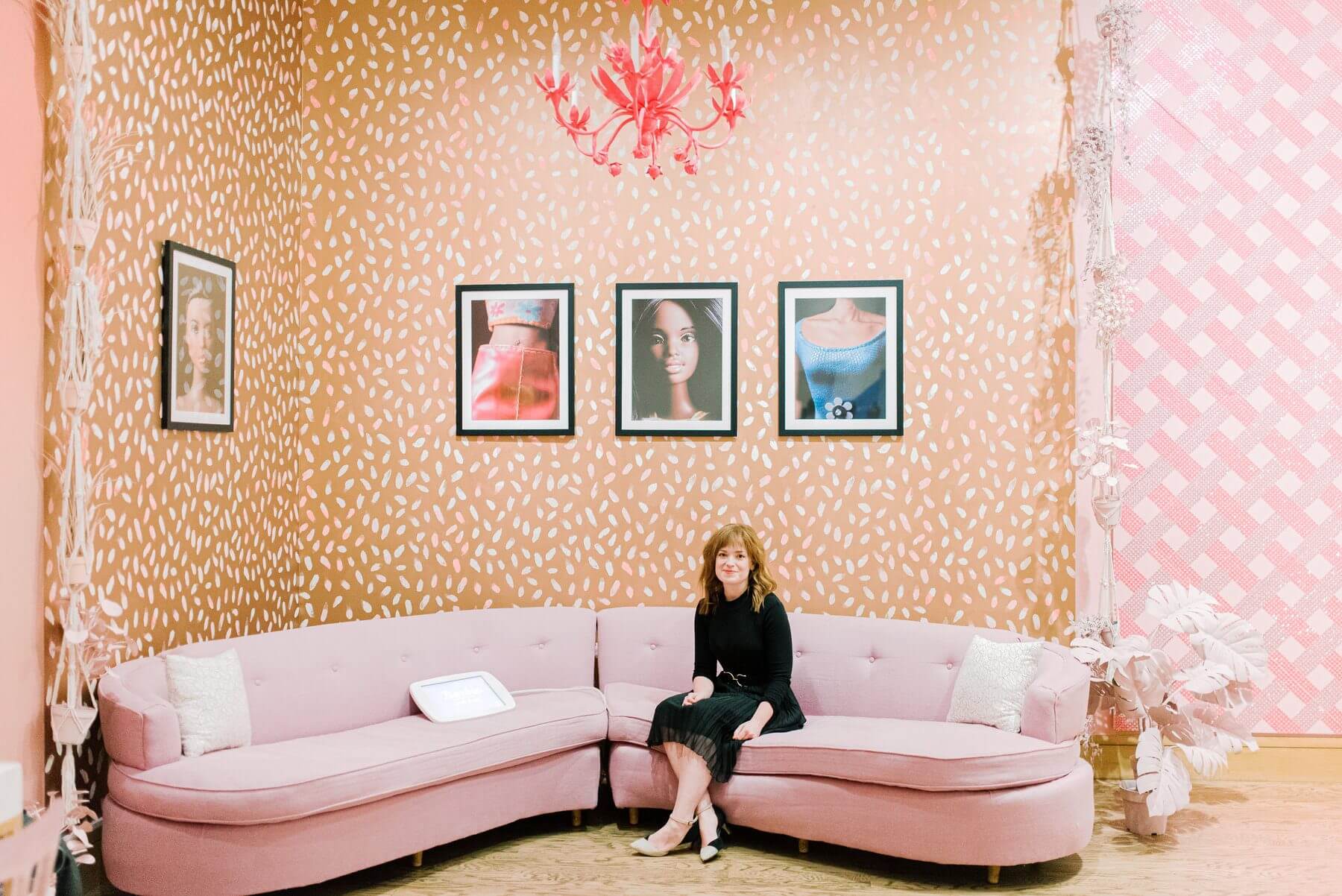Hallie Ringle can find art almost anywhere. Though the North Carolina native is the Hugh Kaul Curator of Contemporary Art at the Birmingham Museum of Art, she knows art exists beyond the bounds of her workplace. According to Hallie, a mural on a wall, a sculpture in a park, an Instagram post and even family photos can all be works of art. Coming from Studio Museum in Harlem, Hallie started her position at the Birmingham Museum of Art in 2018, and has since been on a mission to show Birmingham residents that art is for all — that all are welcome at the museum. We’re thrilled to spotlight Hallie as our newest FACE of Birmingham!

What drew you to Birmingham and the Birmingham Museum of Art?
I love that Birmingham as a city is really creative. Everybody here seems to be involved in some type of creative expression, and so much of that is not contained within institutions. It’s through writing or restaurants or signage or murals. I really liked the vibe of the city. Also, I liked that the museum is looking to become more of an extension of the city — leaning into its status as a department of the city and thinking about how to serve every citizen in Birmingham.
The museum’s exhibit Barbie: Dreaming of a Female Future was largely your idea. Why did you decide to create an exhibition that is essentially an interactive, life-sized Barbie Dreamhouse that features a living room, library and more?
I love to play with ideas, and so when Graham (C. Boettcher, the R. Hugh Daniel Director at the Birmingham Museum of Art) asked me to do an exhibition about Barbie, I thought we could really play with this. She is a complicated figure, and the artwork is really representing a complex relationship with Barbie. We could put it on a wall and call it a day, or we could try to build out what that legacy means even further.
I wanted to create a space that felt like home but wasn’t. I wanted to create a space where people could recognize aspects of dollhouses and aspects of domestic life — aspects of places where they would want to spend time — and say that this is what a museum could also be. It can be a reflection of yourself, of your environment, and all of those things can both serve to welcome you. But it can also make you think a little bit differently about the objects in your own home.

RELATED: 47+ Ways to Spend a Rainy Day in Birmingham
You were also instrumental in bringing Birmingham photographer Celestia Morgan’s exhibition REDLINE to the museum, which explores the history of housing discrimination. What got you interested in this body of work?
Birmingham needs to recognize the wealth of artists that are here that might not have been recognized by larger structures. They might not have a New York gallery or have had their solo exhibition at the Whitney, but they are of that quality. That was something that attracted me to this position. We have so many incredible artists working here, and I had wanted to work with Celestia since before I came here.
Moving here, I started noticing people talk about housing a lot. It matters what neighborhood you live in; it matters how you interact with your community. People here are very civically engaged. Also, there are a lot of people experiencing homelessness around the museum itself, so I’m also quite interested in that conversation. How does the city play a role in that? What are some of the historical reasons for that?

What are some things you have planned for the museum that you can share with us now?
We have a Jacob Lawrence exhibition coming up in Fall 2020, and I’m excited about that.
I’m going to do a small exhibition in 2021 around sports and games so it will coincide with the World Games. It’s a really exciting opportunity to talk about athletes and race and culture and how these things have been shaped around sports and games.
What would you say to people who believe that art isn’t for them?
I would challenge what they think art is. I think certain types of art might not appeal to everyone, but everyone has a place here at the museum and beyond. A lot of people think the museum, specifically, is not for them. The museum has a history of segregation, and I’m very interested in thinking about what it actually means to be a department of the city. How can we right some historical wrongs or at least address and acknowledge some historical wrongs and be an ally to our audience and our city?

What have you been doing to help ensure that all people of Birmingham do feel welcome at the museum?
One of the things I was really interested in was creating a space that could be used for programming and inviting people to come in and use the space whenever possible. We invited the Magic City Acceptance Center to host drop-in hours here. And then with Celestia’s exhibition, we’ve been going out to Smithfield Community Center. We worked with the after-school program; we worked with the senior program to do artmaking activities. So it’s really been following the lead of my colleagues in the education department, who are really, really wonderful.
Do you feel the overall landscape of the art world is shifting? If so, how?
Something I really liked about the museum is that everybody here has this sense that we’re not just a pocket of wealth in the city or this stagnant dry space. Rather, we’re here to serve and enrich people’s experience. I think the museum has had a real reckoning with the field, and the field as a whole is going in this direction. Museums can’t be stagnant spaces. People want participatory experiences. They want to have fun and joy. Everyone’s voice is important here and essential to the work here at the museum.
RELATED: Meet the Woman Who’ll Help You Get a Raise

What do you like to do when you’re not working?
I just got a dog, so I’ve been learning about dogs. I love to read; right now, I’m reading about Frederick Douglass. And I like to container garden.
What are some of your favorite places in Birmingham?
I really like Railroad Park. I know everyone loves Railroad Park, but I really love it. And Red Mountain Park is great. I love the Essential — their Everything Croissant is the bomb dot com, and I’ve been lobbying them to bring it back.
What’s the best advice you’ve been given?
The best advice I’ve been given I got from my uncle. He said, “Things don’t go wrong; they just go differently than planned.” And in contemporary art, things always go differently than planned.
What are three things you can’t live without?
Diet Coke — it keeps me running. Rent the Runway Unlimited — that’s how I dress myself (and I also don’t have to do laundry). And I love candy.
Thank you for sitting down with us, Hallie, and thank you to Eric & Jamie Photography for the photos!
**********
Subscribe to StyleBlueprint for your best “me moment” of the day. Click HERE!



















